
The Museum of (nearly) Everything
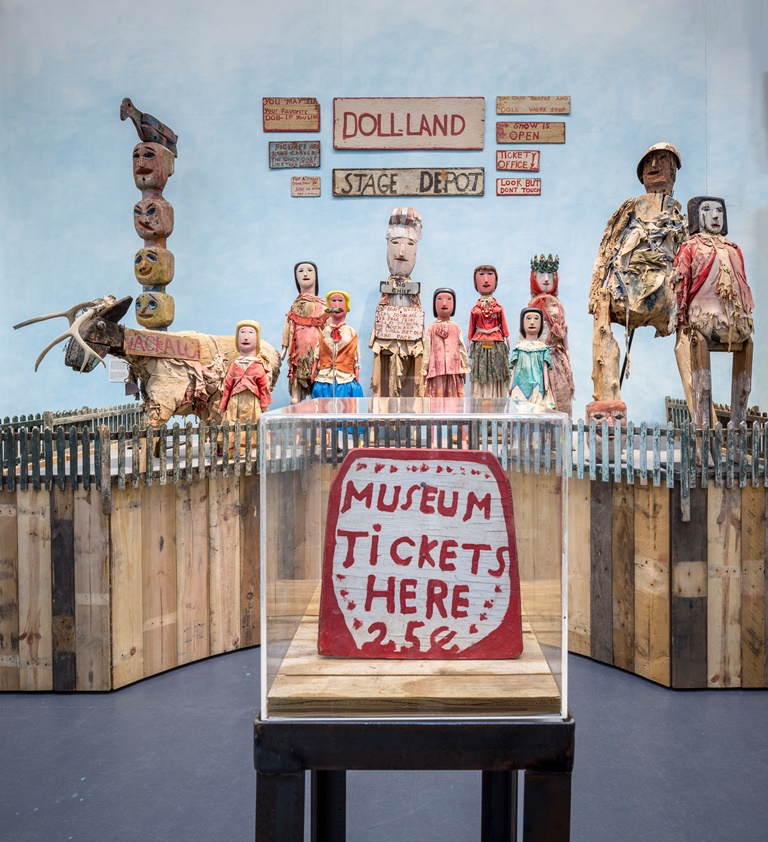
This Saturday, James Brett and his project, The Museum of Everything, opened at the Kunsthal Rotterdam. What ‘Everything’ means is that every piece of art in the show is by untrained and unrecognised artists, who tickled the fancy of James and his team.
This material is sometimes called ‘outsider art’, a term he strongly disapproves of. Instead of looking at the dominant art discourse, he preaches that we should look at the works which he has on display. Quite a successful approach, so it seems. The Museum of Everything has been travelling for five years, distributing its artistic wafers around the globe in various formations. In the Kunsthal, this massive exhibition fills 27 rooms . There are no white cubes. Instead, there are uneven walls decorated with terracotta, green or grey paint in a 90s stippling technique. Rickety chairs and kitsch Greek columns top it all off.
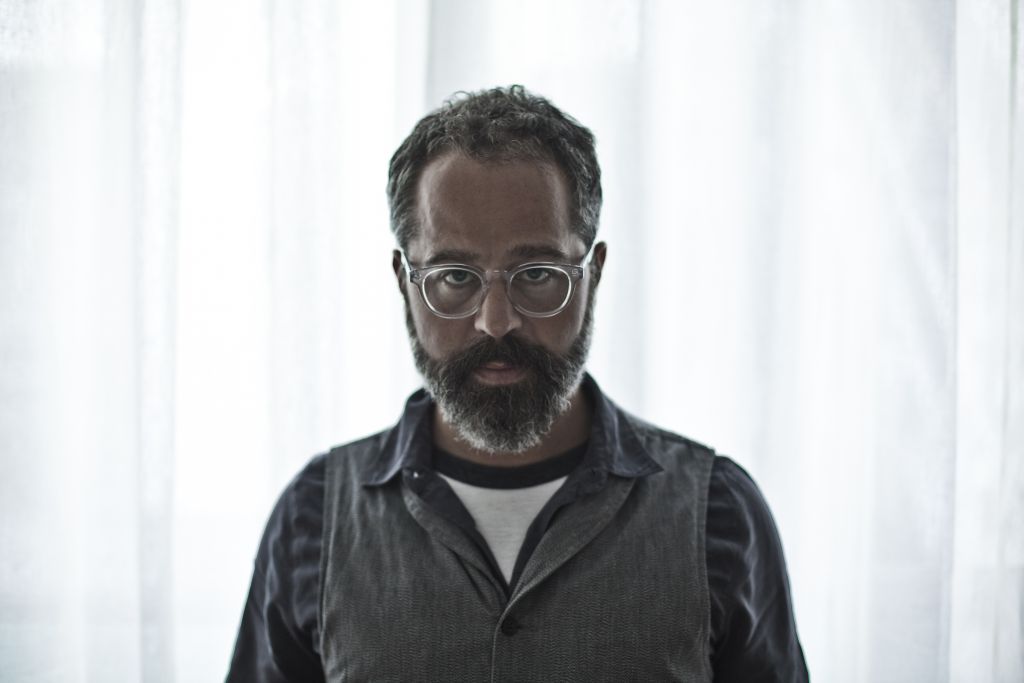
There are over hundred artists in here. Tell me about a few of them.
One of our favourites is Carlo Zinelli. He was a farmer who was drafted into the Spanish Civil War. After two weeks he came back, completely shell-shocked. The rest of his life was spent describing that experience in pictures. No mainstream Italian art museum that I know of has his work in their permanent collection. They don’t think Carlo is an artist, they simply think Carlo is a “schizophrenic”.
We are also showing Morton Bartlett – one of the most famous of the American non-academic artists, whose work has inspired dozen of contemporary artists, including Grayson Perry, Cindy Sherman and Marnie Weber. He fabricated a family of dolls that he used to create scenes that he subsequently photographed. He had originally photographed real children, then he drew them. These became diagrams for the dolls themselves. Here at Kunsthal Rotterdam we are presenting all the elements together. The display in some ways detracts from the mystery of Bartlett, yet we felt it was an opportunity to see the totality of his work.
What about Guo Fengyi?
I had this idea of a display where all the work floated in the room instead of being hung on a wall. You know, the owner of the gallery was basically looking for kids, and he went to a school and the kids said ‘none of us are very good but there’s a lady at the end of the road who is kicking’. Many of these artists are discovered by other artists, a creative eye realises another creative eye. No contemporary artist could ever do this. If you look closely you see there are body diagrams. They became art, but did not start out as art.

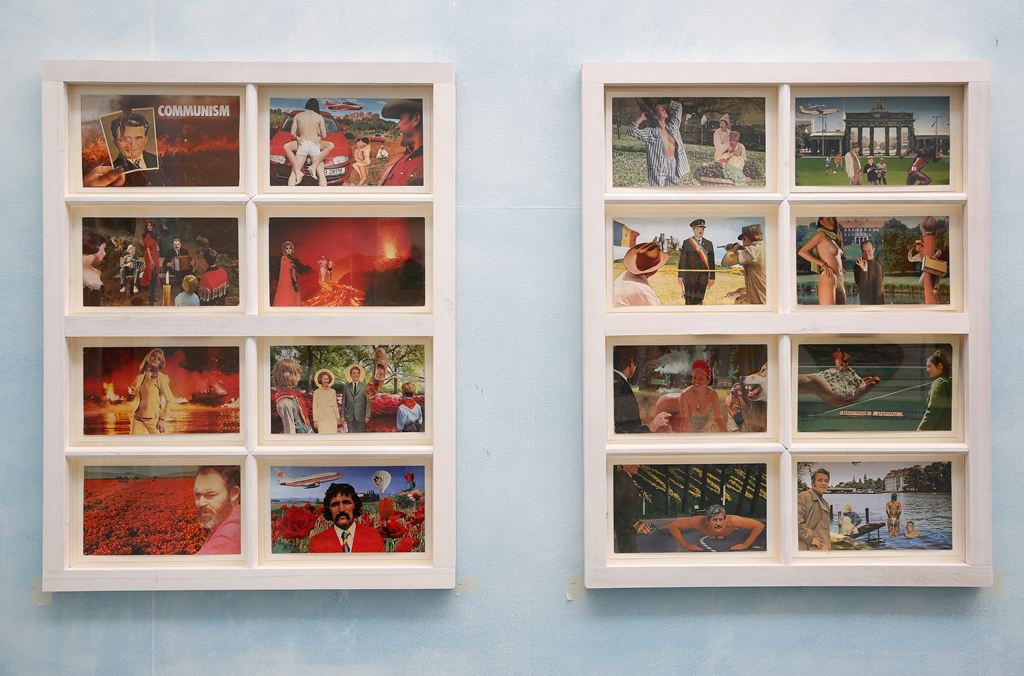
And what about the room filling display of Henry Darger’s work?
Darger is one of the most misunderstood artists in non-academic art. His drawings are usually displayed in fragments, meaning that each work is presented as if it were an indiviual object. That is not the case at all! My own research shows clearly that his drawings are all connected and were originally conceived as a single artwork.
We decided to build special vitrines for his work, to help people understand the connections. If you look at the edges, you can see that they were all part of one book. These were found by Darger’s landlord, who then sliced them apart and sold the pages off one by one. We looked around to see how to connect these works. In other shows we have displayed five pieces which fit together sequentially, but here we decided to show different works that connect to each other. No one has ever displayed these drawings like this before. They are installed as if they are floating in giant fish tanks.
Also, I don’t think people really understand the violence of Darger’s imagery. It is a bit like a TV cartoon and not as violent as it sometimes seems. It feels violent because of the children. Yet the children here are heroes. The children are in danger and the artist is sympathetic because this is what had happened to him.
In the introductory talk the Emily Ansenk referred to the wish of two collaborators to promote Dutch artists. How can this be seen?
We have several in the show. Marianne Schipaanboord describes her dreams and her reality, which is quite complex. She’s not mobile, she doesn’t speak or hear. In some images she shows us her dream apartment, with a sunbed and a special toilet. It is fragile work, but it is not sad at all. When we did a show at Selfridges in London, one critic was very negative. The window which we displayed Marianne in had been given to Tracey Emin some weeks before. And the critic effectively said: ‘These people aren’t artists and this isn’t art!’. That bigoted reaction radicalised me strongly. The critic didn’t believe that Marianne had the right to the title of artist. That’s what The Museum of Everything is all about: the universal right to be an artist, to have visual language available for all. Marianne is an artist, she just doesn’t say she’s an artist and doesn’t go to openings like Tracey Emin! You can say you don’t like her work, but don’t say it is not art. This art represents people’s lives. Their families trust the museum to communicate these lives.
In many ways, I don’t believe in ‘big’ art. I don’t find Jeff Koons meaningful. It’s like decoration at its most extreme – you can enjoy it, but if it really means that much to you, I think that’s coming from you, it’s not coming from that shiny surface! What always appealed to me about this type of private making is how incredible people’s lives are and how they communicate those lives to us. I don’t know if you listen to James Brown. There’s a song where he goes: ‘I am black and I am somebody’. And that’s what this is all about: human rights, equal rights, they are all hidden in sight.
It seems this kind of art has a particular knack for the storytelling around an artist which gets rehashed time and again.
Yes, that’s true – and it’s why we try to avoid it. In The Museum of Everything, when you find a biography, it’s usually quite small, because the stories of these artists are so interesting, we don’t want it to be more interesting than the pictures! In the ‘outsider art’ world, they tend to make more our of the biography than the pictures. You to one of those art galleries and they may say: this man is blind, he’s got one leg, in his childhood this and this happened. It is very rare that we do that. We try to give you the essential facts only.
I don’t come from the world of art, I can’t tell you what good art it, because I don’t really know what ‘art’ is. Taste is important, but real context even more so. I am not talking about gallery context, where an assistant might point to an artwork and tell you the obvious like ‘This is a piece of wood’ and so on … that’s not context! So many students go to art school and are taught to invent context. They can’t even say ‘I’, they have to talk about ‘the self’. That jargon is a false context. Ultimately art is about instinct, it is about the real. Certainly all of our artists are real and show a truthful materialisation of their identity.
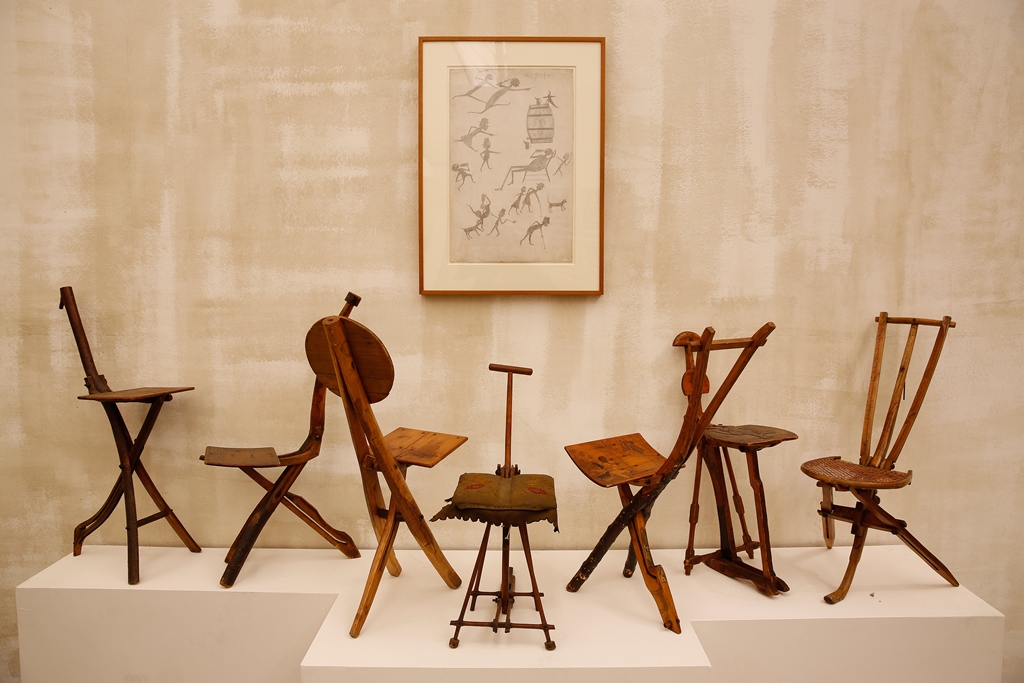
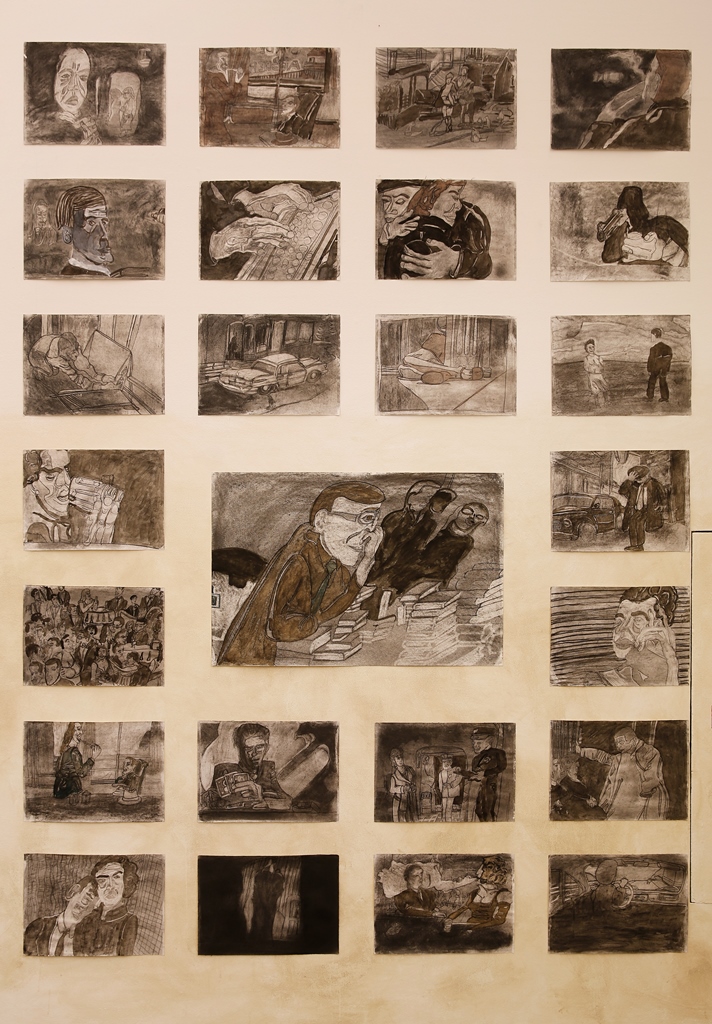
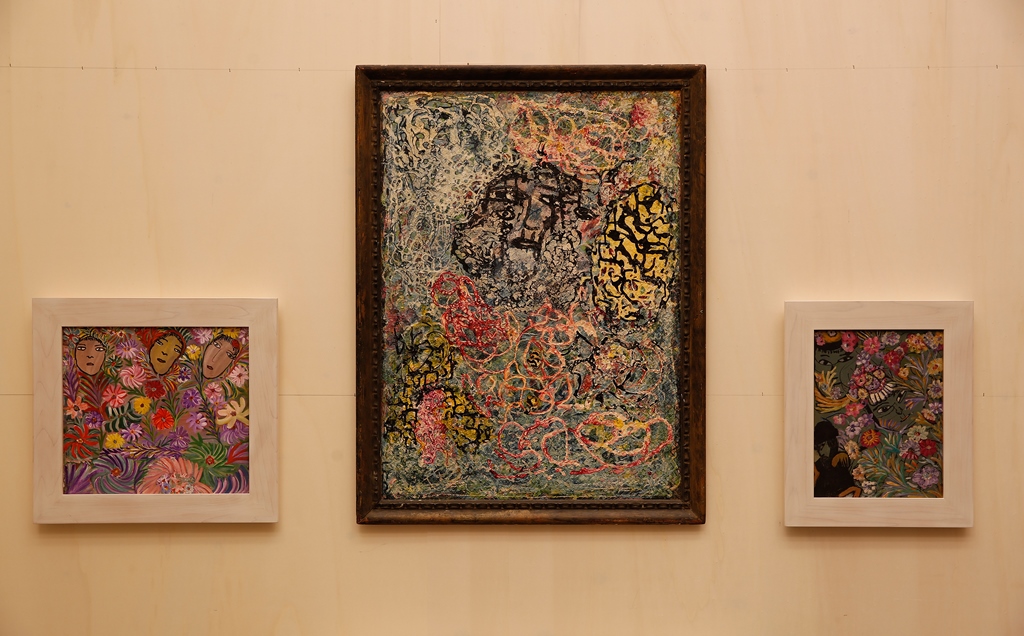
Do you have any selection criteria what gets to be in the show and what doesn’t?
I don’t come from art, I can’t tell you what good art it, because I don’t know what art is. Taste is important, but real context even more. Not gallery context where a girl says this is a piece of wood and so on. That’s not context. Art students go to school and are taught to discover or make context. You can’t even say ‘I’, you have to talk about the self. That jargon is a false context. Ultimately it is about instinct, is something real? I think all of these artists are real and show a truthful materialisation of identity.
What happens when you discover a new artist, do you sell the works?
We are a charity in Britain and do not sell works in our shows. Sometimes we do selling shows in order to raise money for the museum. Usually we lose money! When people to write to us, we will go and see the work and talk with the artist and their family or representatives. If we can work out a price, then we acquire it. But it is not about selling these works, it is about communicating!
Is there a certain sequentiality throughout the rooms? How are they organised?
We like them to have contrast. There is a science room, a monochromatic room, an American room…The show is only finished on the last day, because I spend it fiddling, tweaking.
Why does it look like this?
Not like a white box? I’ve gone on record saying that the white box is a fascist idea which was created by galleries to sell art for too much money! It is sort of what I believe. Certainly it has been co-opted by museums around the world to present an apparent, and rather dishonest, sense of neutrality. If you really want to know if a painting works, put it in your bedroom, put it in your living room! Everything works when you stick it in a white box. When students come to The Museum of Everything and ask about curating, I often advise them go to their auntie’s house and visit her guest toilet … that’s really good curating. When we did our first shows in found buildings, we let the rooms speak for us: the space decides what art it wants to exhibiti. Here in the Netherlands, I worked with my production designer, Eve Stewart. We wanted to make a Kunsthal inside the Kunsthal. As if Rem Koolhaas built his building around an existing Kunsthal that was never finished!
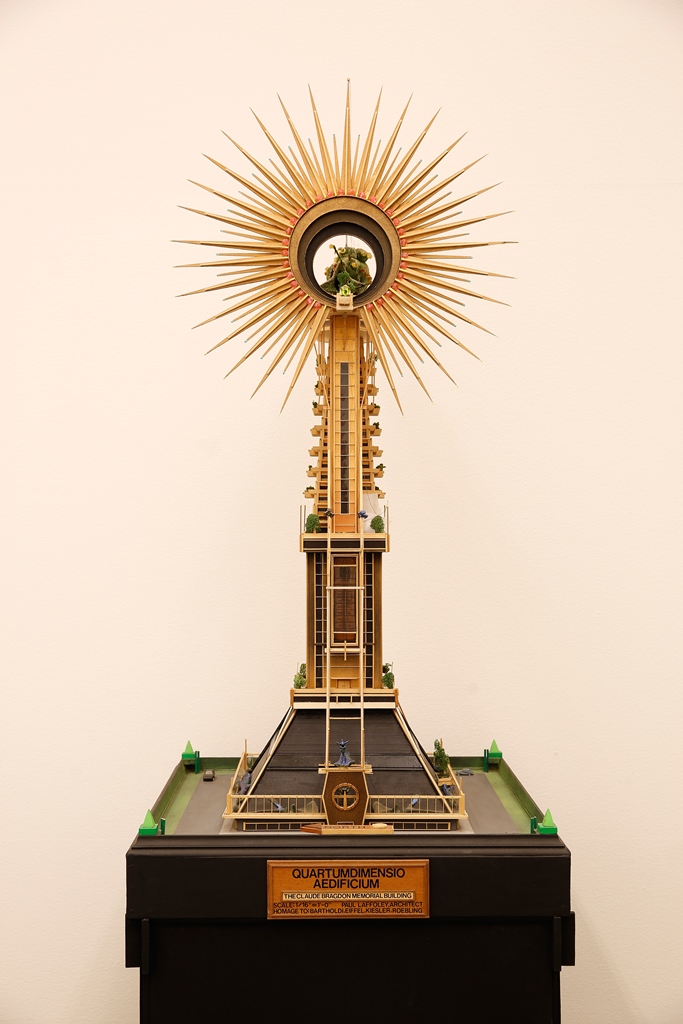
The very rough finish of the wooden walls and the chairs speaks to a certain aesthetic which reinforces the clichés that you say you want to avoid so badly.
I would argue that ours is not a clichéd approach. I certainly don’t know anybody else who would lay it out an exhibition like this. When we were planning this, I was thinking about a museum I love in Romania, called The Museum of the Romanian Peasant. They did their installation a bit like this and I loved it. So I’m not trying to be ‘brut’, I just sort of liked the idea of a rougher installation. For sure there is not any kind of clever post-rational idea at play here! Decoration and curation are not enemies, in fact that’s my point about the white box. It’s a false security!
Not clichéd as in what has been done before, but clichéd as in meeting the aesthetic expectations of what art made by ‘non-artists’ is expected to look like.
I know that being a critic encourages critical thinking. But I invite you to look at it the other way round. Why has no museum of substance done an immersive show like this? Many small museums do amazing work, but nobody goes to see them. The American Museum of Folk Art used to have a space right next to MoMA in New York, which has between 5 and 10 million visitors a year I believe. Yet they consistently had under a 150,000 visitors. That means they were not successfully communicating their amazing collection to the uninitiated audience. I want the person in the street to go: ‘Wow, I didn’t know this kind of stuff existed!’. I want them to know there is an alternative type of art. A softer and less institutional approach to the surrounding aesthetic can help the art speak. That’s why we do it the way we do it … we are doing what we can to help.
The Museum of Everything
Kunsthal Rotterdam
5.3 t/m 22.5.2016
Alix de Massiac
is editor at Metropolis M


